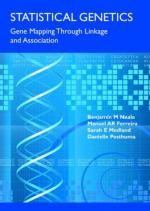|
This section contains 180 words (approx. 1 page at 300 words per page) |
Linkage is a term used to describe the phenomenon of two or more non-allelomorphic genes repeatedly occurring in the same gamete (a haploid reproductive cell). These genes and their appropriate alleles are passed from generation to generation as a joined unit. They do not obey the law of independent assortment.
Linkage occurs on the same chromosome, and in fact, one chromosome is one linkage group. When cross over occurs during meiosis (cell division that produces four haploid gametes), the linkage breaks down. Crossing over is the exchange of genes by chromosomes during meiosis that alters the genetic pattern contained within the chromosome. The further apart the alleles are on the chromosome the more likely a cross over event will occur between them and linkage will not be evident.
Linkage and its occasional breakdown during cross over provided was studied in order to produce the earliest form of genetic (or linkage) maps. Linkage maps were based on the percentages of cross overs between linked non-allelomorphic genes and showed the relative locations of genes within the chromosomes of an organism.
|
This section contains 180 words (approx. 1 page at 300 words per page) |


